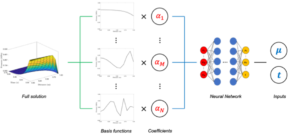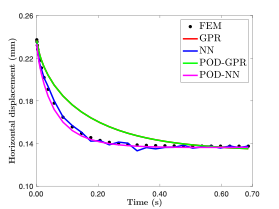Ryan Santoso
I am interested in the uncertainty quantification and optimization under uncertainty for solving complex physical problems, for instance fluid flow in porous media and full-wave form inversion. I am also interested in the use of machine learning as a choice of low-fidelity model to reduce computational cost and deal with big data.
- Ph.D. Student, RWTH Aachen, Germany – ETH Zurich, Switzerland (2021 – )
- Research Assistant in Petroleum Engineering, KAUST, Saudi Arabia (2019 – 2021)
- MSc Energy Resources and Petroleum Engineering, King Abdullah University of Science and Technology, Saudi Arabia (Aug 2017- Dec 2018)
- BSc Petroleum Engineering, Institut Teknologi Bandung, Indonesia (Jul 2012- Oct 2016)
Project Title: Physics-based machine learning for real-time simulation update
Host Institutions: RWTH Aachen, ETH Zürich, Geophysica, Fraunhofer IEG
Supervisory Team: Florian Wellmann, Martin Saar, Renate Pechnig, Rolf Bracke
Start date: 1.4.2021
ESR Objectives:
Enabling real-time update of geophysical simulations of coupled processes (thermal and hydraulic, hydraulic and mechanical) for realistic settings using a physics-based machine learning method and a combination with the High-Performance Computing finite element simulation environment MOOSE.
Consideration of various spatial parameterisations to capture heterogeneous parameter fields based on conventional spatial random field models, as well as geometric interface representations.
Research Update
We compare two different physics-based machine learning approaches, the Physics-Informed Neural Network (PINN) and the non-intrusive reduced-basis (NI-RB) method, and conventional (data-driven) machine learning approaches. We find out that physics-based machine learning approach based on the NI-RB method is suitable for geothermal applications where measurement data is limited. It requires a small number of training samples to achieve high accuracy and gives a significant speed-up (the running time is in the order of miliseconds) over a Finite Element-based model run. The NI-RB method then enables performing a robust uncertainty quantification of large-scale, multi-physics models.
The NI-RB method also works for reactive transport simulations where it can capture non-linear responses due to a hydro-chemical coupling with a small number of training samples. We also implemented the NI-RB method for uncertainty quantification of available heat energy in The Hague, Netherlands. The Hague model is high-dimensional and requires High-Performance Computing (HPC) infrastructure to perform thermal and thermo-hydraulic analysis. Here, the NI-RB method significantly reduces the computational time to perform model runs and is proven to enable such a large-scale uncertainty quantification. This result is useful to plan the future drilling program.
We are currently investigating the use of NI-RB method for accelerating chemical equilibrium calculation and for optimizing coaxial borehole heat-exchanger design in Cornwall, UK.

(a)

(b)
Figure: The components of the physics-based machine learning (based on non-intrusive reduced-basis approach) (a), the comparison between the physics-based machine learning (POD-GPR and POD-NN) and the data-driven machine learning (GPR and NN) in term of accuracy toward Finite Element Method (FEM) result at small training set.



 This project has received funding from the European Union’s Horizon 2020 research and innovati
This project has received funding from the European Union’s Horizon 2020 research and innovati